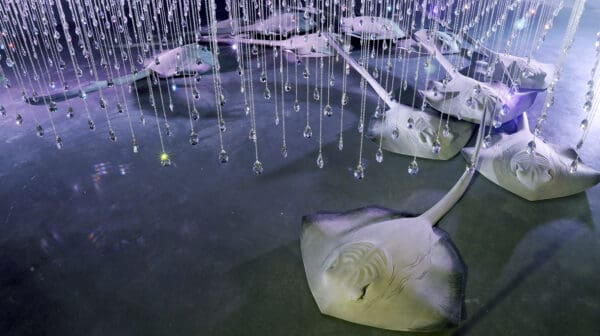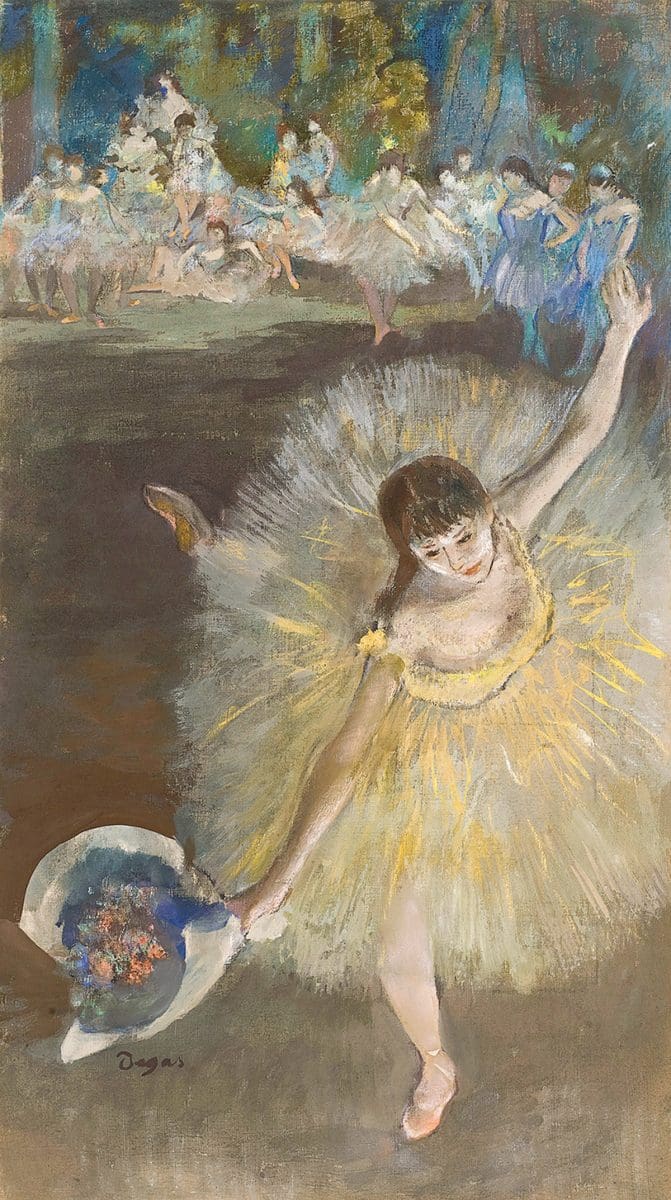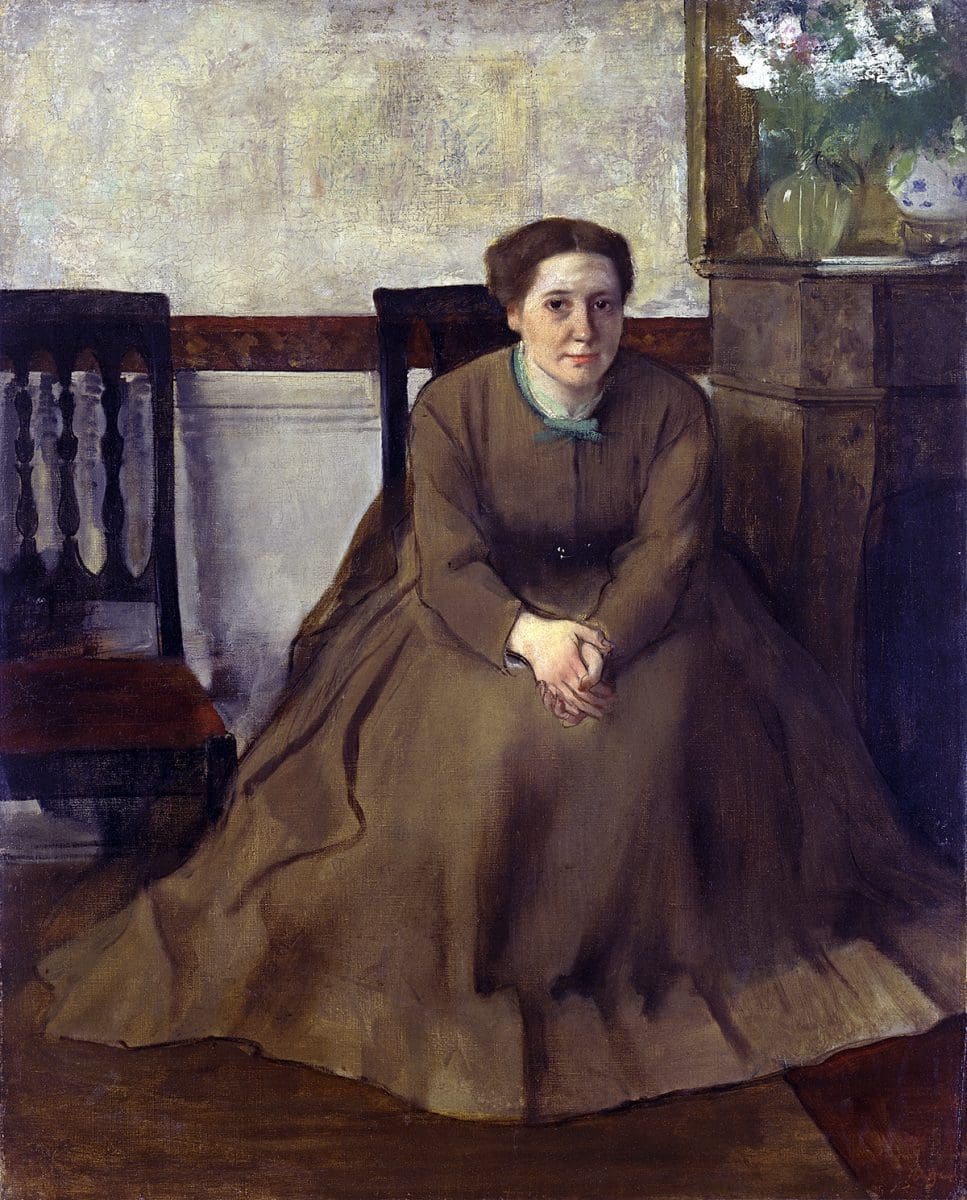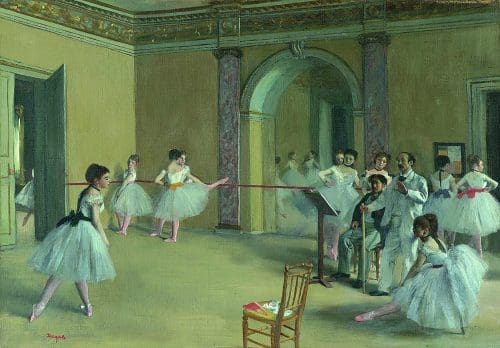
Cartographies of the heart
Five Acts of Love, a new exhibition at ACCA, maps the space in which memory, intimacy and resistance intersect.

Edgar Degas, Family portrait (also called The Bellelli family) 1858–67 oil on canvas, 201 x 249.5 cm. Musée d’Orsay, Paris (RF 2210) © Musée d’Orsay, Dist. RMN-Grand Palais / Patrice Schmidt.

Edgar Degas, A cotton office in New Orleans, 1873, oil on canvas, 73 x 92 cm. Musée des Beaux-Arts de Pau (878.1.2) © RMN-Grand Palais / Michèle Bellot / Madeleine Coursaget.

Edgar Degas, Finishing the arabesque, 1877, oil and essence, pastel on canvas 67.4 x 38 cm. Musée d’Orsay, Paris (RF 4040) © Musée d’Orsay, Dist. RMN-Grand Palais / Patrice Schmidt.

Edgar Degas, Dancers on the stage c.1899, oil on canvas, 76.0 x 82.0 cm. Musée des Beaux-Arts de Lyon. Legs Jacqueline Delubac, 1997 (1997-29). Image © Lyon MBA – Photo RMN / Ojeda, Le Mage.

Edgar Degas, Victoria Dubourg c. 1868–69, oil on canvas, 81.3 x 64.8 cm. Toledo Museum of Art, Toledo, Ohio. Gift of Mr. and Mrs. William E. Levis (1963.45).

Edgar Degas, Dancers at the barre, 1900, charcoal and pastel on tracing paper on cardboard 111.2 x 95.6 cm. National Gallery of Canada, Ottawa. Purchased 1921 (1826). Photo © NGC.
“I would have been in mortal misery all my life for fear my wife might say, ‘That’s a pretty little thing,’ after I had finished a picture.”
Edgar Degas was a misanthrope, a fiercely independent innovator and, perhaps unsurprisingly, a lifelong bachelor. Although working and exhibiting alongside the Impressionists, he scowled at their plein air paintings.
Ever the contrarian, among the 200 pieces collected from museums and galleries as far flung as Sao Paolo and Hiroshima, you might not expect to discover “Degas the landscape artist”, says NGV curator Ted Gott. “Especially given his constant insistence that he was a Realist, not an Impressionist, for whom “nature is the enemy”.
There’s a sense of a relentless search for new angles, forms and methods – including, says Gott, “jumping up and down on his pastels to create dense ground layers” and “scorching the surface” of some of his works.

Though born into a well-heeled family and remembered foremost as a chronicler of ballet and horse racing, Degas was not deterred by criticism and scandal to complete “monotype studies of sex workers in a Parisian brothel” in the late 1870s.
The studies remain surprising for “both the frankness and mundanity” with which Degas approached the risqué subject. “In his eyes”, says Gott, “these were studies of working women, and it is their boredom and exhaustion in their downtimes between clients that he documents.”
Degas’s impression on modern and contemporary art endures largely because of “his abandonment, at a radically early stage (beginning of the 1860s) of accepted notions of ‘finish’ in his paintings”, says Gott. Meanwhile, his subject matter of “human behaviour, human psychology and emotion” remains as timely as ever.
Degas: A New Vision
NGV International
24 June – 18 September